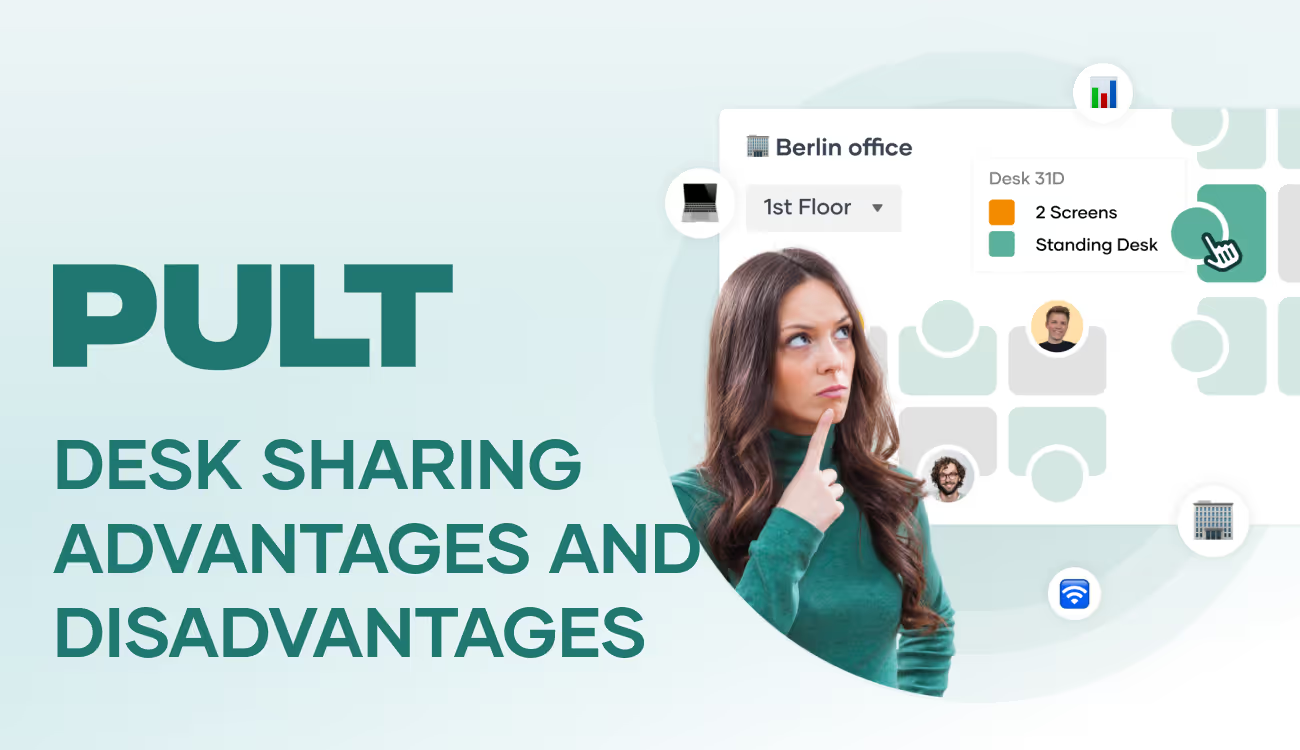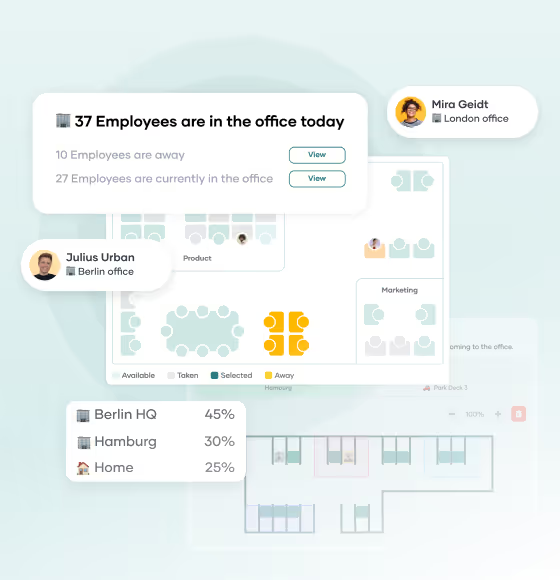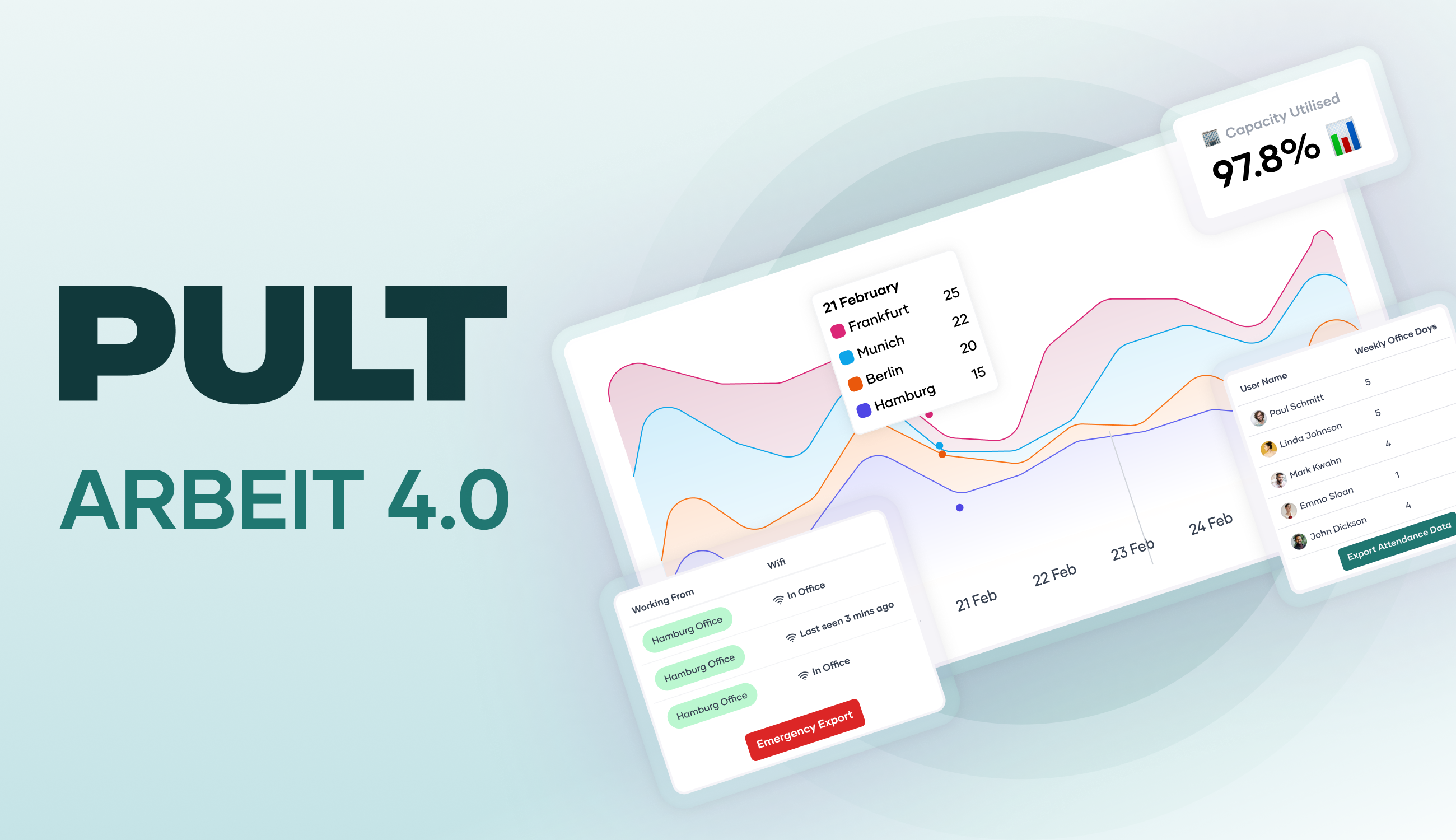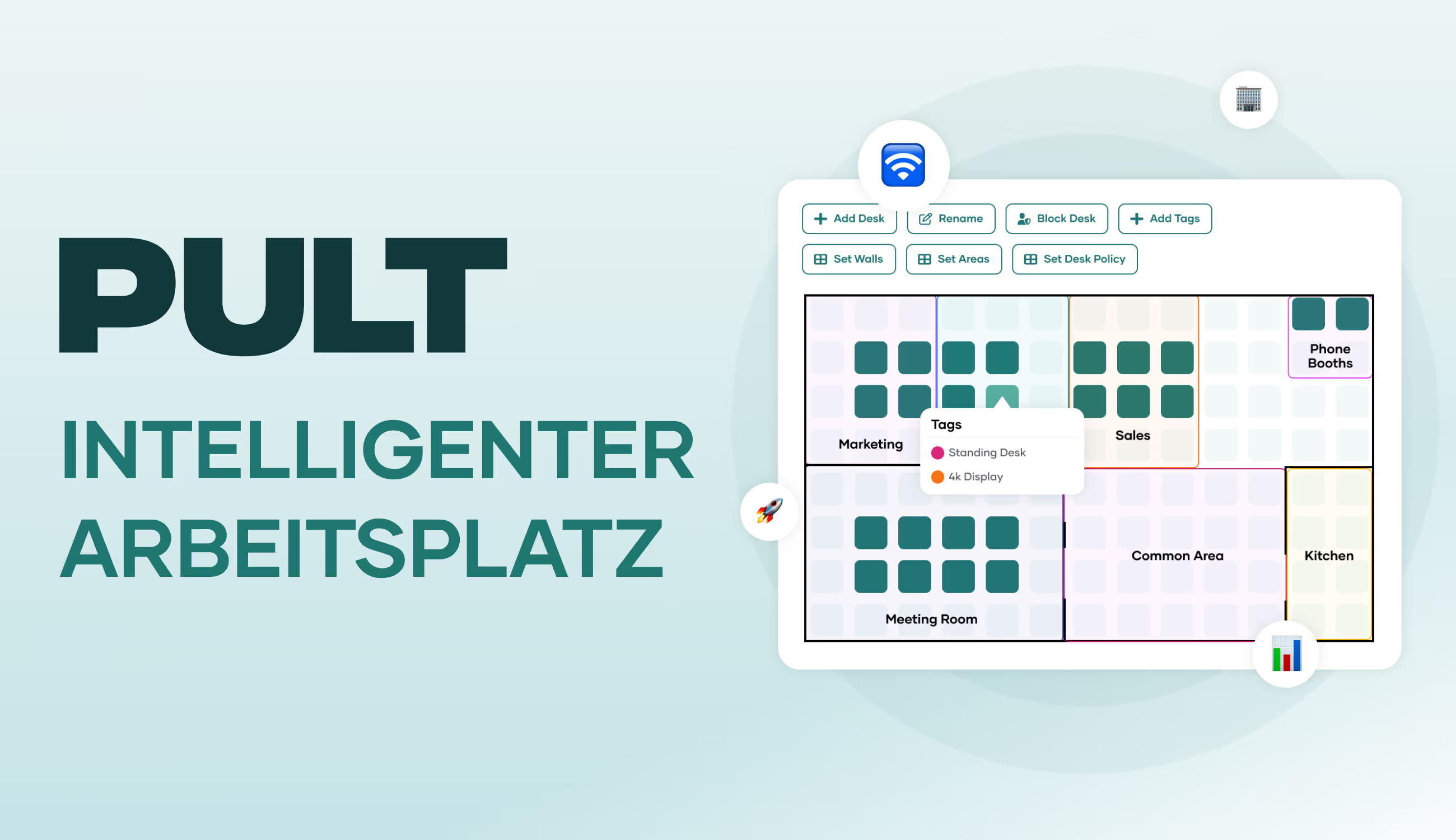7 advantages of hybrid working

Hybrid working: advantages for companies and employees
What are the main advantages of hybrid working?
- Hybrid working allows for a more flexible approach to the working day.
- Personal interaction in the office is maintained with hybrid work.
- Employees gain more freedom to make decisions and can work with greater concentration.
- Companies have lower costs, more motivated teams and a better position in the labour market.
What are the advantages of hybrid working for employees and companies?
1. Better work-life balance
Currently, more than 60% of employees in the UK work in a hybrid model, i.e. partly in the office and partly from home. The ability to choose where to work flexibly noticeably improves the work-life balance. This is also confirmed by a study by Hardwig and Latniak (2025), which shows that hybrid structures allow employees to organise their day in a more self-determined and stress-free manner.
2. Greater concentration thanks to suitable environments
Many employees use their home office for highly concentrated work, while interaction in the office is used specifically for meetings or creative processes. According to a recent Fraunhofer IAO study, around 80% of hybrid employees report higher productivity, partly because they can plan their tasks better in line with their environment.
3. Time and cost savings through less commuting
The hybrid model is a real advantage, especially for commuters: those who do not have to go to the office every day not only save time but also travel costs. In a survey by TravelPerk, 88% of hybrid employees surveyed stated that they were able to significantly reduce their commute.
4. Higher motivation and stronger loyalty
When employees have a say in when and where they work, their satisfaction and emotional attachment to the company increase. This development is also described by Gallup's Engagement Index (based on data from 2023, but with a trend that remains valid), which shows that self-determined work has a positive effect on long-term motivation. Staff turnover is also reduced.
5. Competitive advantage in the labour market
Companies with hybrid working models find it easier to recruit skilled workers. In the Fraunhofer survey mentioned above, over 80% of the organisations surveyed stated that mobile or hybrid working is now firmly established, usually through company agreements. These companies are thus responding directly to the expectations of many applicants.
6. Space utilisation and costs
The study by Bath (Springer, 2025) shows that 34.1% of companies operate hybrid working with clear regulations, allowing structures to be adapted on a permanent basis. When offices and their individual workstations are no longer used to full capacity, the available space can be reallocated and repurposed for the benefit of employees. Even when the company grows, it can remain in the property, as efficient use means that additional capacity can be created at virtually any time.
7. Contribution to sustainability
Hybrid models also contribute to the ecological balance: reduced commuting leads to a measurable decrease in emissions. According to a study by the RKW Competence Centre, the switch to partial home office working is a relevant lever in the climate strategy of many companies, especially those with a high proportion of office workplaces.
How can hybrid working be successfully implemented?
To ensure the success of your hybrid working model, create clear guidelines that your employees can follow and that you can present to applicants. Ensure a high level of reliability in technology and software, and work on building trust and personal responsibility within your team.
Agree on binding rules with your team
Clearly define whether and on which days work will be done in the office, which tasks can be done remotely, and how personal availability is regulated. Document these agreements so that everyone in the team can read them at any time.
Tip: Develop a short, understandable team agreement with fixed guidelines for hybrid working. This will also benefit you when applicants ask about working conditions and when training new colleagues.
Plan days in the office with a specific purpose
Use office hours for activities that offer real added value through personal interaction, such as strategy workshops, retrospectives or project launches. Plan them in advance together with the team and make sure they are binding. However, avoid requiring days in the office for no reason or for vague reasons.
Tip: Introduce fixed team days that focus on coordination, planning and social interaction. Keep these days free of unnecessary remote meetings. Make the most of the time together and show your team that face-to-face meetings have intrinsic value.
Standardised technical equipment
Ensure that all employees, whether in the office or at home, can work with equivalent equipment. This includes stable internet connections, good audio quality and cloud software that can be used from anywhere.
Tip: Work with IT to develop a standard setup for hybrid workplaces and provide a fixed technology budget for home offices.
Define clear communication rules
Determine which tools are used for which type of communication, how information should be documented, and in which cases synchronous or asynchronous communication is appropriate. Agree on these rules with your team and review them regularly.
Tip: Put the standards you have developed in writing, for example for chat, email, meetings and project documentation. This will create a binding structure that works regardless of the place of work.
Foster team culture through fixed rituals
Create formats for exchange, joint reflection and cohesion for hybrid teamwork. These rituals give your team structure and a temporal rhythm.
Tip: Establish fixed formats such as monthly meetings, joint planning meetings or feedback sessions. Give these formats a fixed place in the calendar and associate them with positive experiences, such as a meal together.
Continuous improvement of the model
Regularly evaluate how well hybrid working is functioning in your team, both technically and culturally. Determine satisfaction, office utilisation and productivity, and use this information to make specific adjustments.
Tip: Conduct a compact team survey once a quarter. Evaluate the results and work with the team to derive possible changes. In this way, the system will improve evolutionarily.
Tip: PULT's Office Insights feature includes a personal feedback function. This allows you to conduct surveys within your team without any additional software and find out directly what is going on with your employees.
How does hybrid working compare to office-only or remote-only models?
In the discussion about the right way to work, there are three models: full presence in the office, purely remote working and hybrid working. Each of these models has advantages and disadvantages depending on the industry, task and team structure.
Working full-time in the office
Strengths
- Direct communication and coordination
- Clearly structured working day and location
Weaknesses
- Time lost commuting
- Less freedom to organise your time
- Hardly any opportunities to retreat
Particularly suitable for
- Tasks requiring a high degree of coordination
- Intensive teamwork on site
- Sensitive data (e.g., finance, research & development in laboratories)
Working completely remotely
Strengths
- Location independence
- High degree of time sovereignty
- Access to supra-regional talent
Weaknesses
- Less social connection
- Risk of isolation
- No access to local resources
Particularly suitable for
- Individual knowledge work
- Software development
- International project teams
- Activities with clear output
Hybrid working
Strengths
- Freely combinable
- Good balance between concentration and exchange
- Adaptable to tasks
Weaknesses
- Coordination effort
- Need for clear rules
- Potentially unequal visibility within the team
Particularly suitable for roles with changing requirements
- Consulting
- Marketing
- Project management
- Managers
- HR
How can the disadvantages of hybrid working be overcome?
Hybrid working offers a lot of freedom, but it also presents teams and companies with new challenges. These mainly concern communication, the organisation of collaboration and the creation of the necessary structures.
Frequently cited disadvantages of hybrid working include:
- Fewer face-to-face encounters within the team: If part of the team regularly works from home, this can undermine the sense of community. Informal conversations then take place much less frequently. You can counteract these disadvantages with face-to-face formats, such as regular team days or project-related face-to-face phases.
- Coordination effort: Hybrid working requires clear agreements: Who is available when? Which channels are used for what? What needs to be documented? Are there core working hours? Create binding communication standards, calendars and shared software for this purpose.
- Blurring the lines between work and leisure: When the workplace is also at home, the boundaries can sometimes become blurred. Employees report feeling that they are or must be "always available." This can be resolved by setting fixed offline times, clearly communicating availability rules, and fostering a corporate culture that encourages conscious breaks.
- Exploring office capacity: Removing desks creates space, but capacity must still be sufficient for peak times. Finding a balance requires forward planning and accurate analysis of utilisation.
Tip: In PULT, you can measure the utilisation of your office, even without active desk sharing. An employee's presence is recorded as soon as one of their devices connects to the company Wi-Fi. Your team does not have to actively dial in – you will still receive the attendance figures. Find out more about PULT Presence here.
Finding balance for hybrid working
Hybrid working is a standalone working model with clear advantages. Employees gain a great deal of flexibility in terms of time management and personal responsibility, while companies become more attractive to applicants and are both more productive and more resilient.
The basis for hybrid working is that you actively shape the concept. Ensure that you have the right framework conditions, acceptable rules and a model that is constantly evolving within your company.
Frequent hurdles lie in coordination:
- Who is in the office and when?
- Which workstations are actually available?
- Are there enough desks available during peak times?
- When is a meeting room free?
- Who is allowed to book which rooms?
With the PULT desk booking software, you can bridge the gap between home office and office. Your employees can book their office workspace from home, ensuring that it is available when they arrive. Meeting rooms, designated zones and parking spaces can also be booked.
By integrating PULT with Outlook, Google Calendar and many other tools, space bookings are also created as calendar entries. This provides an even better overview of which colleagues will be in the office.
Tip: Find out more about office evaluation in PULT here and desk booking here.
{{cta}}
Advantages of hybrid working – Frequently asked questions and answers
How can productivity be maintained or increased in the hybrid model?
Hybrid working offers space for concentrated work at home and creative collaboration in the office. It is important that teams define fixed attendance days or work phases in order to bundle agreements, meetings and feedback in a targeted manner.
What are the advantages of hybrid working for managers?
Managers gain more autonomy over their time and can therefore switch more effectively between strategic work in their home office and team presence in the office. At the same time, trust within the team improves when responsibility is decentralised.
How does hybrid working affect health?
The Konstanz Home Office Study 2025 shows that employees with a hybrid working style report less exhaustion than those who are required to be present in the office full-time. The freedom to choose where to work promotes well-being, especially when ergonomics and structure are guaranteed.
How does hybrid working improve work-life balance?
The freedom to choose where to work makes it easier to manage personal commitments, commuting times and rest periods. This creates more flexibility in everyday life without reducing working hours.
A new hybrid workplace experience is coming. Start Now. 🎉
A new hybrid workplace experience is coming. Start Now. 🎉





















.avif)





